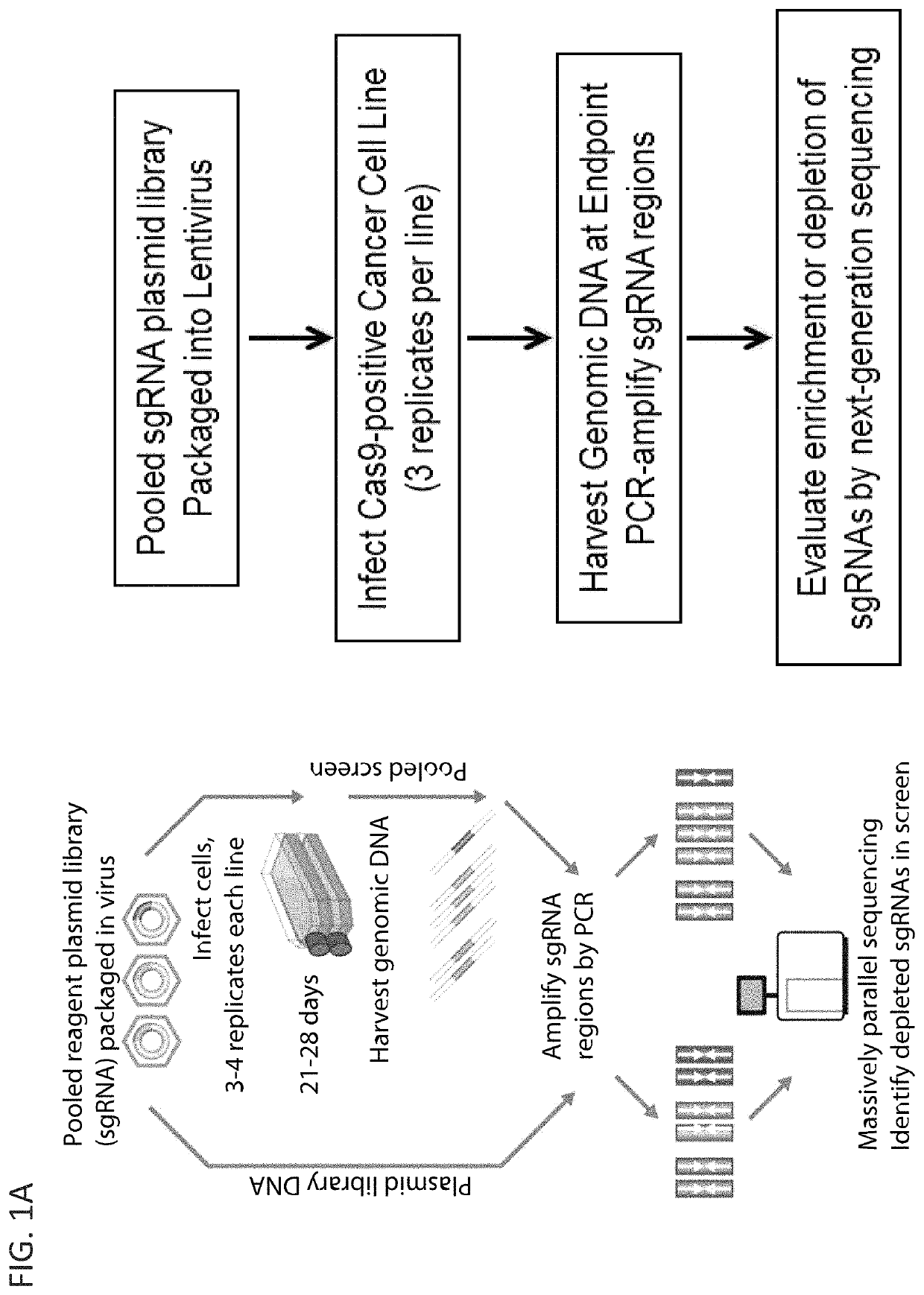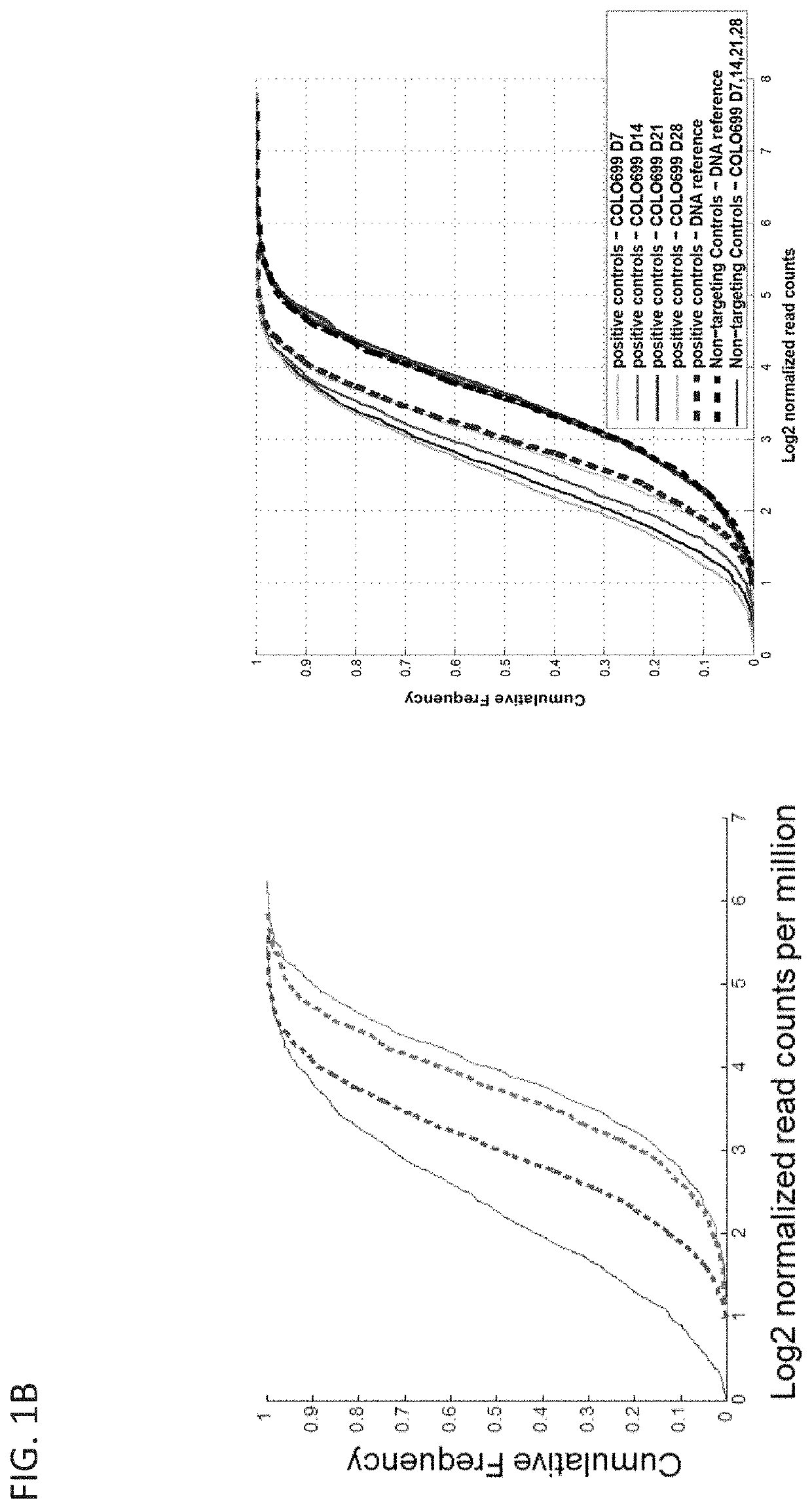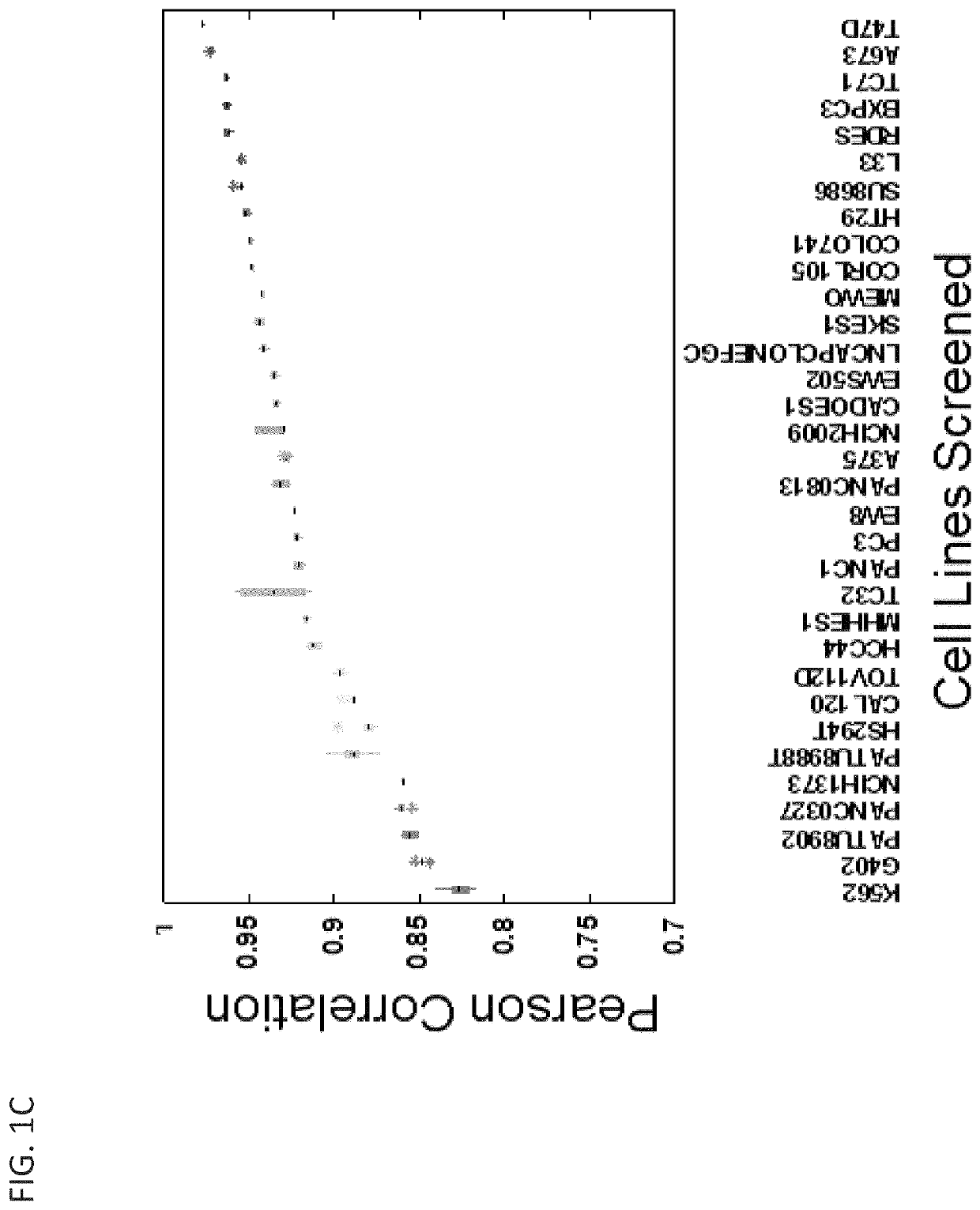Compositions and methods for targeting cancer-specific sequence variations
- Summary
- Abstract
- Description
- Claims
- Application Information
AI Technical Summary
Benefits of technology
Problems solved by technology
Method used
Image
Examples
example 1
Materials and Methods
[0439]Cancer cell lines were transduced with a lentiviral vector expressing the Cas9 nuclease under blasticidin selection (pXPR-311Cas9). These stable polyclonal cell lines were then infected in replicate (n=3) at low multiplicity of infection (MOI<1) with a library of 123,411 unique sgRNAs targeting 19,050 genes (6 sgRNAs per gene), 1,864 miRNAs and 1,000 non-targeting control sgRNAs, selected in puromycin and blasticidin for 7 days and then passaged without selection while maintainingwith a representation of 500 cells per sgRNA until a defined time point. Genomic DNA was purified from end cell pellets and the guide sequence PCR amplified with sufficient gDNA to maintain representation, and quantified using NGS.
Cas9 Activity Assay
[0440]Cancer cell lines expressing stable Cas9 under Blasticidin selection were transduced with a lentivirus with and EF1a driven puromycin-2A-GFP cassette, and a U6 driven sgRNA targeting GFP (pXPR_011) (11). ...
example 2
CRISPR-Cas9 Screening in Cancer Cell Lines
[0445]To investigate the utility of the CRISPR-Cas9 approach to identify acquired genetic dependencies across cancer cell lines, Applicants performed genome-scale pooled screening in 43 cancer cell lines representing a diversity of cancer types and genetic contexts of both adult and pediatric lineages (Table 1; FIG. 1A). CRISPR-Cas9 screens in cancer cell lines were performed utilizing the GeCKOv2 CRISPR-Cas9 system in which Cas9 and the sgRNA are expressed from separate lentiviral vectors (9). Cancer cell lines were transduced with a lentiviral vector expressing the Cas9 nuclease under blasticidin selection. These stable cell lines were then infected in replicate (n=3) at low multiplicity of infection (MOI<1) with a library of 123,411 unique sgRNAs targeting 19,050 genes (6 sgRNAs per gene), 1,864 miRNAs and 1,000 non-targeting control sgRNAs, selected in puromycin and then passaged with an average representation of 500 cells per sgRNA unti...
example 3
Identification of Oncogene Dependencies
[0449]Applicants next evaluated whether CRISPR-Cas9 screening effectively identifies known oncogene dependencies in cancer cell lines. Applicants observe clear dependency of cancer cell lines on CRISPR-Cas9 mediated knock-out of mutated, rearranged and over-expressed oncogenes in a genotype- and phenotype-specific fashion (FIG. 2). Notably, KRAS-mutant cell lines appear dependent on KRAS for proliferation and viability in the screen (FIG. 2A). The BCR-ABL translocated leukemia cell line K562 shows strong dependence on the ABL1 kinase (FIG. 2B). Moreover, Applicants also see strong dependency of estrogen-receptor-positive breast cancer cells on expression of the estrogen receptor and androgen-receptor positive prostate cancer cells on expression of the androgen receptor (FIG. 2C-D).
PUM
| Property | Measurement | Unit |
|---|---|---|
| length | aaaaa | aaaaa |
Abstract
Description
Claims
Application Information
 Login to View More
Login to View More - R&D
- Intellectual Property
- Life Sciences
- Materials
- Tech Scout
- Unparalleled Data Quality
- Higher Quality Content
- 60% Fewer Hallucinations
Browse by: Latest US Patents, China's latest patents, Technical Efficacy Thesaurus, Application Domain, Technology Topic, Popular Technical Reports.
© 2025 PatSnap. All rights reserved.Legal|Privacy policy|Modern Slavery Act Transparency Statement|Sitemap|About US| Contact US: help@patsnap.com



